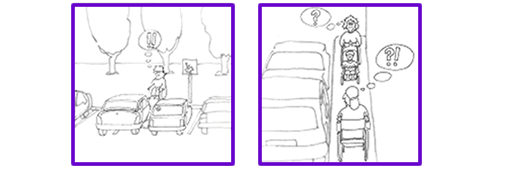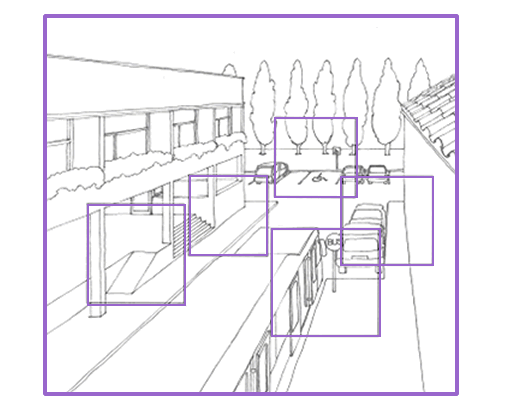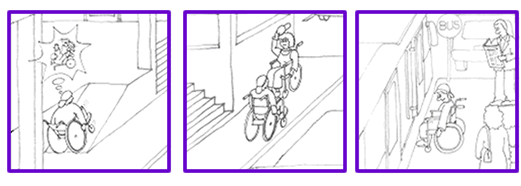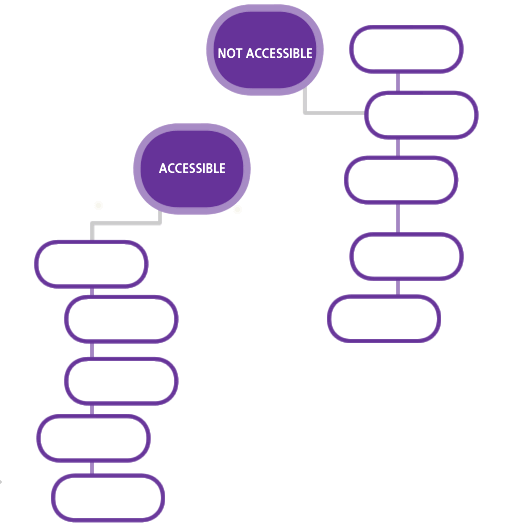

| STUDENT'S WORKSHEET | Barriers | Architectural and Communication Barriers | |||||||||||||||||||||||||||||||
| 1.4.2. Architectural and Communication Barriers | |||||||||||||||||||||||||||||||
|
Activity 1
|
|||||||||||||||||||||||||||||||
|
:: Look at the five areas in the large picture and study them carefully. ::
Choose adjectives and nouns
from the boxes to describe the five areas and write them in the
blank spaces below (there are more words than needed). |
|||||||||||||||||||||||||||||||
|
|||||||||||||||||||||||||||||||
|
Activity 2
|
|||||||||||||||||||||||||||||||
|
:: Look at the five small pictures and match them with the large one. :: Can you say which pictures show accessible areas and which ones show barriers? Comment your results with your classmates. :: Classify the words you have written in Activity 1 under accessible or not accessible in the boxes below.
|
|||||||||||||||||||||||||||||||
|
|
|||||||||||||||||||||||||||||||
|
Activity 3
|
|||||||||||||||||||||||||||||||
|
:: Make as many meaningful sentences as possible from the following chart in not more than 10 minutes (you can use the words more than once).
|
|||||||||||||||||||||||||||||||
|
Activity 4
|
|||||||||||||||||||||||||||||||
|
:: Read and comment 1.2. Architectural and Communication Barriers. |
|||||||||||||||||||||||||||||||
|
Written Exercises
|
|||||||||||||||||||||||||||||||



